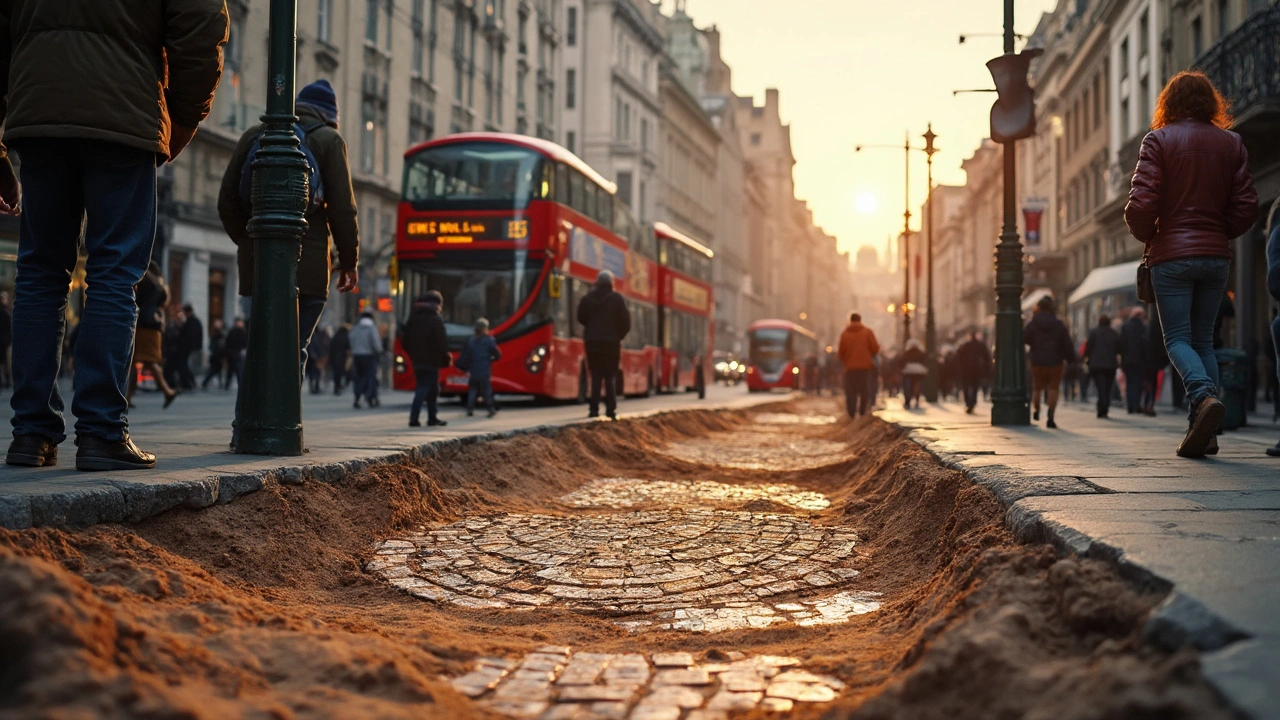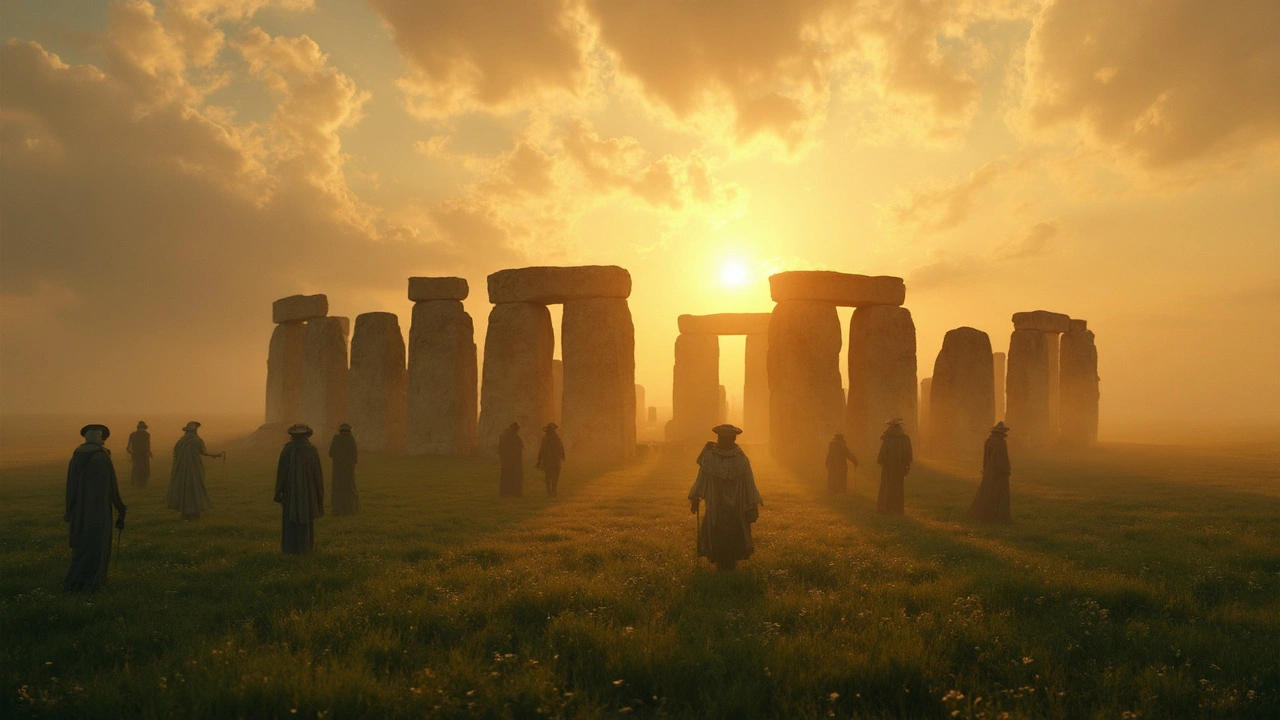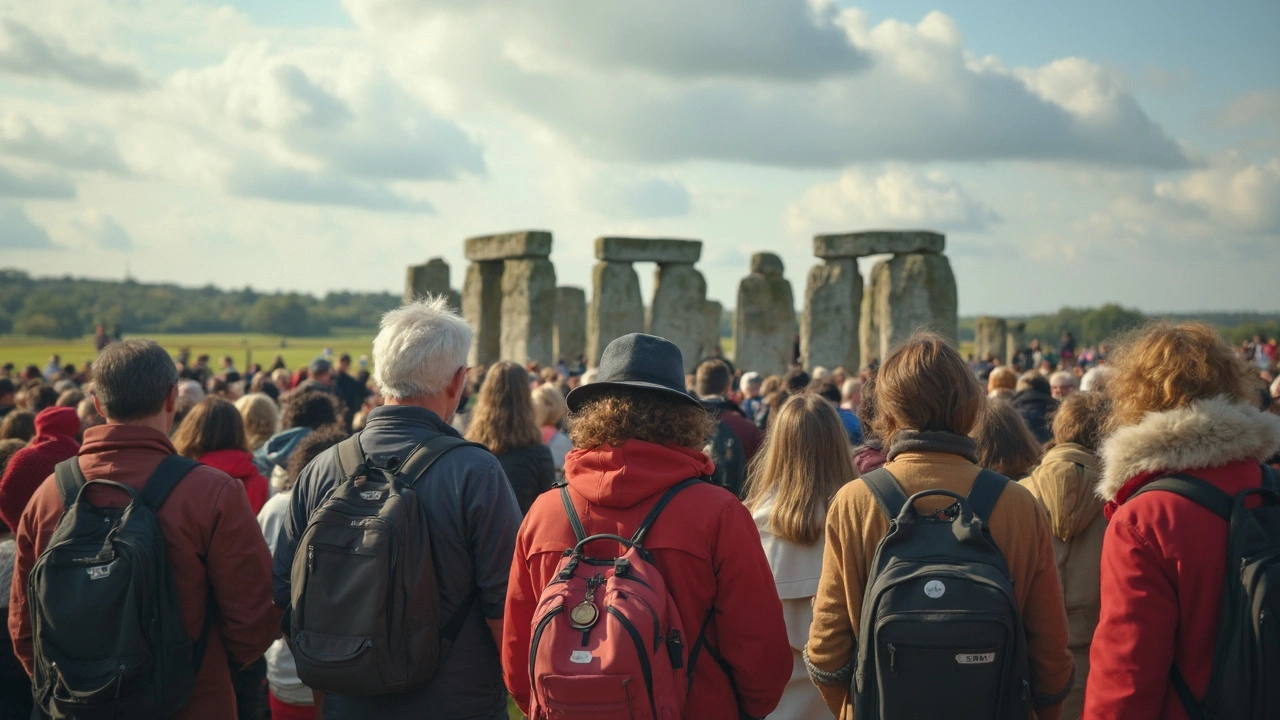Historical Sites That Will Ignite Your Imagination

Ever walked somewhere that instantly made your imagination run wild? That’s the feeling you get at the world’s best historical sites—they drop you right into the action. These places aren’t just old buildings and weathered stones. They’re time machines, full of stories, mysteries, and stubborn little details you won’t find in any textbook.
Right now, travel is more accessible than ever, and people crave real-life experiences. But with so much to see (and let’s be honest, limited vacation days), picking the right historical sites is everything. You want the spots that give you those “wow, I’m really here” moments. Whether you’re a hardcore history buff, a casual explorer, or someone looking for trip ideas that the whole family will talk about for years, knowing the facts and smart tips about historical sites will make your journey way more rewarding.
Ready to break out of the usual tourist circuit and uncover what lies beneath the surface? Keep reading for the kind of tips that save you time, money, and stress—and for facts that’ll have your friends wishing they’d packed their bags too.
- Why Historical Sites Matter More Than You Think
- Top Sites That Turn History Into Adventure
- Hidden Gems Worth The Detour
- Essential Tips for Visiting Historical Sites
- Must-Know Facts That Change How You Explore
- How to Make the Most Out of Your Historical Journeys
Why Historical Sites Matter More Than You Think
If you think historical sites are just old ruins, think again. Every stone and arch tells you real stories about how people lived, worked, and even messed up. Many of these spots shaped the world we know today, and walking through them actually helps us understand the present.
Take the Colosseum in Rome—this wasn’t just a stadium. During its prime, it could seat over 50,000 people (that’s as many as some modern sports arenas). Gladiator battles and wild animal hunts drew crowds from every status. It’s wild to think that over 4 million people now visit the Colosseum every year, proving that fascination for the past is stronger than ever.
Visiting must-see sites like Machu Picchu or the Great Wall of China goes beyond snapping selfies. UNESCO reports that more than 1,100 sites are protected for their cultural or natural value. They’re seen as global treasures, and some are even in danger due to climate change, tourism, or neglect. If people don’t visit responsibly, these irreplaceable landmarks could vanish for future generations.
But it’s not all about nostalgia or saving the past. Historic places create jobs—think guides, ticket sellers, even local food joints nearby. For example, after the restoration of Angkor Wat in Cambodia, tourist visits jumped and the local economy boomed.
Now, a cool fact for the curious: the Pyramids of Giza are the only ancient wonders still standing out of the original Seven Wonders of the World. That’s over 4,500 years of history right in front of your eyes. It’s more than just dusty rocks—it’s the only living proof of human ambition from the ancient world that you can still see up close.
If you want to get real value from travel, start putting ancient landmarks on your to-visit list. You’ll walk away with more than photos—you’ll gain a connection to real people who lived centuries before you.
| Top Historical Sites | Annual Visitors (Approx.) |
|---|---|
| Colosseum, Rome | 4 million |
| Machu Picchu, Peru | 1.5 million |
| Great Wall of China | 10 million |
So next time you plan a trip, remember: exploring history isn’t just for textbooks. It’s how we keep these stories alive for everyone, now and in the future.
Top Sites That Turn History Into Adventure
If you want your next trip to feel like stepping into a story, check out these historical sites. Each one packs adventure, real stories, and weird facts you’ll remember long after you leave.
- The Colosseum, Rome: It’s giant, it’s old, and it’s surprisingly high-tech for its time. This ancient stadium used to seat up to 50,000 people. Gladiators fought wild animals here, but they also flooded the arena for fake sea battles. Go with a guide; they’ll show you the underground tunnels where fighters and lions waited their turn.
- Machu Picchu, Peru: Hidden in the mountains, this Incan city was built around 1450 but abandoned just a century later. It stayed secret until 1911, when American historian Hiram Bingham showed it to the world. The train ride up is an adventure in itself, and the views are unreal.
- The Pyramids of Giza, Egypt: These huge stone triangles are the last of the original Seven Wonders of the World. Experts say over 2.3 million stone blocks were used, many weighing as much as a car—without modern machines. For photos with no crowds, get there before sunrise.
- Angkor Wat, Cambodia: It’s the world’s largest religious monument. Built in the 12th century, it’s still standing thanks to super-strong sandstone blocks and clever engineering. Climb up at dawn to watch the sun rise over the towers for a moment you won’t forget.
- Pompeii, Italy: The city where time stopped in AD 79, buried by Mount Vesuvius. You’ll see houses, temples, even old graffiti left on the walls. The site covers about 170 acres, so wear comfy shoes and bring lots of water.
| Site | Best Time to Visit | Unique Tip |
|---|---|---|
| The Colosseum | Early morning or late afternoon | Book skip-the-line tickets online to avoid crowds |
| Machu Picchu | May–September (dry season) | Reserve tickets months ahead, daily visitor numbers are limited |
| Pyramids of Giza | October–April (cooler months) | Hire a licensed local guide to avoid tourist traps |
| Angkor Wat | November–February | Rent a bicycle for exploring lesser-known temples nearby |
| Pompeii | Spring or autumn | Download a free audioguide app to explore at your own pace |
Adding a few of these must-see sites to your next trip will not only level up your travel stories—it’ll give you a new way to experience the world. And if you’re worried about crowds or planning stress, just follow the tips above for a smoother trip.
Hidden Gems Worth The Detour
Most people head straight for the big names—Eiffel Tower, Colosseum, Machu Picchu. Sure, they’re icons. But the world is packed with jaw-dropping historical sites that never make the front of the guidebook. Let’s talk about some underrated places that are totally worth changing your plans for.
1. Çatalhöyük, Turkey
This spot is one of the world’s oldest cities, dating back nearly 9,500 years. Excavations have revealed wall paintings, everyday tools, and even ancient skulls used for rituals. Unlike some ancient sites, there’s no flashy pyramid—just fascinating ruins showing how early city life actually worked. Pro tip: Book a guided tour here if you want the real lowdown on what’s been uncovered.
2. Kuelap, Peru
Think Machu Picchu but with no crowds. Kuelap is a massive stone fortress built by the Chachapoyas, high in Peru’s cloud forests. There are more than 400 circular stone houses inside its walls, some five times higher than Machu Picchu’s. A new cable car makes getting there way easier, saving you from a grueling hike.
3. Leptis Magna, Libya
If you like Roman ruins, this one’s a game-changer. Leptis Magna is so well-preserved it feels like somebody pressed pause in the 2nd century. Marble columns, an amphitheater, and even marketplace stalls are still standing. It’s got that Indiana Jones vibe—just check current travel advisories before booking a flight.
4. Nan Madol, Micronesia
This place is straight out of a legend. Nan Madol is a city built on a lagoon, made up of almost one hundred man-made stone islets. No one really knows how the builders moved those giant basalt rocks around a thousand years ago. It’s quiet, mysterious, and off the beaten path, especially for those looking to escape tourist crowds.
5. Hampi, India
Hampi feels like an open-air museum, dotted with giant temples and carved boulders. It was the capital of a mighty South Indian empire, and you can still wander through royal baths, elephant stables, and markets. Go early in the day for cooler temps and better photos.
- Always check entry times before you go—many ancient landmarks close in the afternoon.
- Bring cash, as card payments can be tricky in remote areas.
- If you’re traveling with kids, look for guided tours. Local guides often tell stories you won’t hear online.
| Site | Age (years) | Location | Annual Visitors (approx.) |
|---|---|---|---|
| Çatalhöyük | 9,500 | Turkey | 30,000 |
| Kuelap | 1,500 | Peru | 70,000 |
| Leptis Magna | 1,900 | Libya | 3,000* |
| Nan Madol | 1,000 | Micronesia | 2,500 |
| Hampi | 700 | India | 500,000 |
*Based on available regional data; travel advisories can impact totals.
These hidden gems are wild cards on your travel map. They give you bragging rights and way more personal space than most busy sites. Plus, exploring these places supports local communities and keeps these amazing history stories alive for the next traveler.

Essential Tips for Visiting Historical Sites
So you’re heading out to see some historical sites? Nice move. But before you go, you’ll want to know a few tips to get the most out of your visit and avoid rookie mistakes. Trust me, these can make or break your trip.
First, research opening hours and ticket rules before you go. Some spots (like the Louvre or Machu Picchu) sell out days in advance. Online tickets save you from standing in hour-long lines—in 2024, over 65% of major attractions moved to timed entry, so be prepared.
- Pick the Right Time: Early mornings or weekday afternoons are usually quieter, which means fewer crowds and better photos. Avoid holiday weekends unless you love lines.
- Dress for the Setting: Lots of ancient landmarks and castles have rough steps or uneven paths. Wear solid shoes. If you're poking around temples or churches, check for dress codes. Some require your knees and shoulders covered.
- Bring Small Essentials: A reusable water bottle, snacks, and a portable charger go a long way. Many sites don’t have food stands nearby, and phone batteries drop fast when you’re snapping photos all day.
- Ask for Local Guides: Many must-see sites offer guided tours from locals who know secret details, shortcuts, and where to snap the best photos. At the Colosseum, for example, guides often take you into areas most tourists never see.
- Respect the Rules: Don’t touch ancient stones or stray off marked paths. Besides being bad for the site, doing this at places like Stonehenge or the Acropolis will get you a fine—security is tight.
If you’re planning a few stops in the same city, check for combo tickets. In Rome, the pass that includes the Forum, Palatine Hill, and the Colosseum saves you both cash and hassle. Some cities, like Paris and Istanbul, offer special "museum passes" to skip the worst of the lines.
| Historical Site | Average Waiting Time (Without Ticket) | With Skip-the-Line |
|---|---|---|
| Vatican Museums | Up to 2 hours | 15 minutes |
| Versailles | 1-2 hours | 10 minutes |
| Colosseum | 1 hour | 10 minutes |
Last thing—snap photos, sure, but try to put your phone down and take it all in for a minute. You’ll get more from these places when you don’t rush. After all, people traveled the world for centuries just to stand in the same spot.
Must-Know Facts That Change How You Explore
Digging into historical sites is a lot more interesting when you know the details most tourists miss. For starters, plenty of famous ancient landmarks are much younger (or older) than you think. Take Stonehenge for example—people started building it around 3100 BCE, which means it’s been catching rain for over 5,000 years. And Machu Picchu? It wasn’t actually discovered by the outside world until 1911, when Hiram Bingham stumbled on it almost by accident.
Ever wonder why so many city names start with “new”—like New York or New Delhi? Turns out, it’s a nod to Europe’s old habit of reusing names in different colonies. That little fact changes how you understand entire city layouts and the kind of history you’ll find there.
- The Great Wall of China isn’t just one wall. It’s a series of walls and fortifications built over several dynasties, stretching more than 13,000 miles. Yet, some parts are wide enough for five horses to ride side by side, while other sections are crumbling footpaths in the mountains.
- The Colosseum in Rome had a retractable roof. Ancient Romans used “velarium”—sails they pulled over the top—to keep crowds cool during events. Handy for a stadium that could seat about 50,000 people.
- Petra’s famous “Treasury” was never actually used as a treasury. Archaeologists think it was probably a tomb for an ancient Nabatean king, but legends about hidden loot still draw treasure hunters every year.
| Site | Surprising Fact |
|---|---|
| Great Pyramid of Giza | The pyramid was the tallest man-made structure for over 3,800 years. |
| Angkor Wat | Bigger than any modern city park in size—this temple complex covers over 400 acres. |
| Acropolis of Athens | The Parthenon was once used as a treasury, church and even a mosque. |
If you’re snapping pics, check the site’s rules—some, like the Sistine Chapel, strictly ban photography. That’s not just random; it’s to protect delicate art from camera flashes and crowds jammed together for the perfect shot. Researching opening hours and ticket policies also saves a ton of time. Many must-see sites sell out months ahead, and sometimes visiting after 4pm means quieter crowds and better photos.
Knowing these facts makes you see past the surface. You stop looking at just old stones and start picking up on layers most people miss. Packing a little extra knowledge is the real travel hack.
How to Make the Most Out of Your Historical Journeys
If you want your trip to a historical site to feel like an adventure, there’s a trick to it—plan smart and let yourself dive in. Just looking at old ruins or plaques won’t cut it. You get the best stories, photos, and memories by going a little deeper than the average tourist.
Want your experience to stick? Here’s how to make it happen:
- Do your homework first: A quick read about where you’re going can flip a pile of bricks into a real-life drama. For example, before heading to Pompeii, knowing that it was buried under ash for almost 1700 years changes everything you see.
- Book guided tours with locals: Local guides often drop facts you can’t find online. At the Alhambra in Spain, guides will point out hidden Arabic inscriptions and explain why the place was basically the Beverly Hills of its day.
- Time it right: Early mornings or later afternoons mean fewer crowds and better photos. The Colosseum in Rome, for example, sees peak visitors between 11am and 3pm—go outside those hours for breathing room and clearer shots.
- Use official apps or audio guides: Most big historical sites now have smart guides. The Acropolis Museum app in Athens lets you scan artifacts and get bite-sized stories without the boredom of a textbook.
- Pack the right gear: Bring comfy shoes, water, a portable charger, and some cash in case smaller sites don’t take cards. Many churches in Europe, like Milan’s Duomo, require shoulders and knees to be covered—lightweight layers save hassle.
- Take notes and photos: Jot down surprising facts or snap unusual angles—not just the postcard shot. This way you’ll actually remember what made each site unique.
- Be respectful: Don’t climb on ruins, take artifacts, or ignore local customs. In places like Angkor Wat, Cambodia, inappropriate selfies get you kicked out.
Travelers who plan just a bit are more likely to avoid common headaches: long lines, getting lost, or spending too much. Want to skip hours of waiting? Major attractions like the Louvre or Machu Picchu now release their visitor numbers:
| Site | Average Daily Visitors | Best Time to Visit |
|---|---|---|
| Louvre Museum | ~30,000 | Wednesday evenings |
| Machu Picchu | ~2,500 | Early morning |
| Colosseum | ~20,000 | After 4pm |
Making the most of your journey isn’t about checking sites off a list—it’s about living the stories and facts that make each place memorable. Go in curious, stay flexible, and you’ll come home with more than just great photos: you’ll have stories worth sharing.

